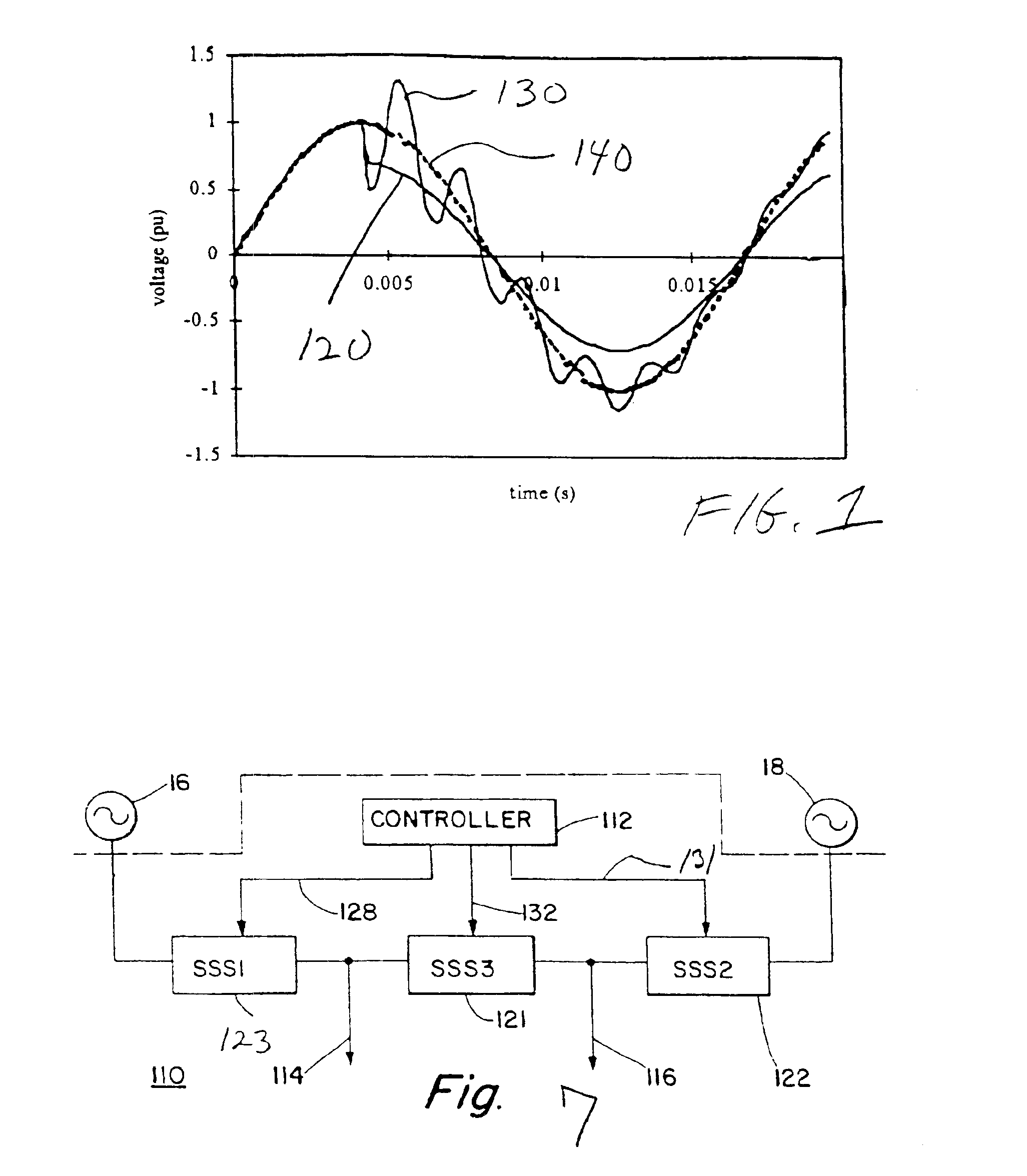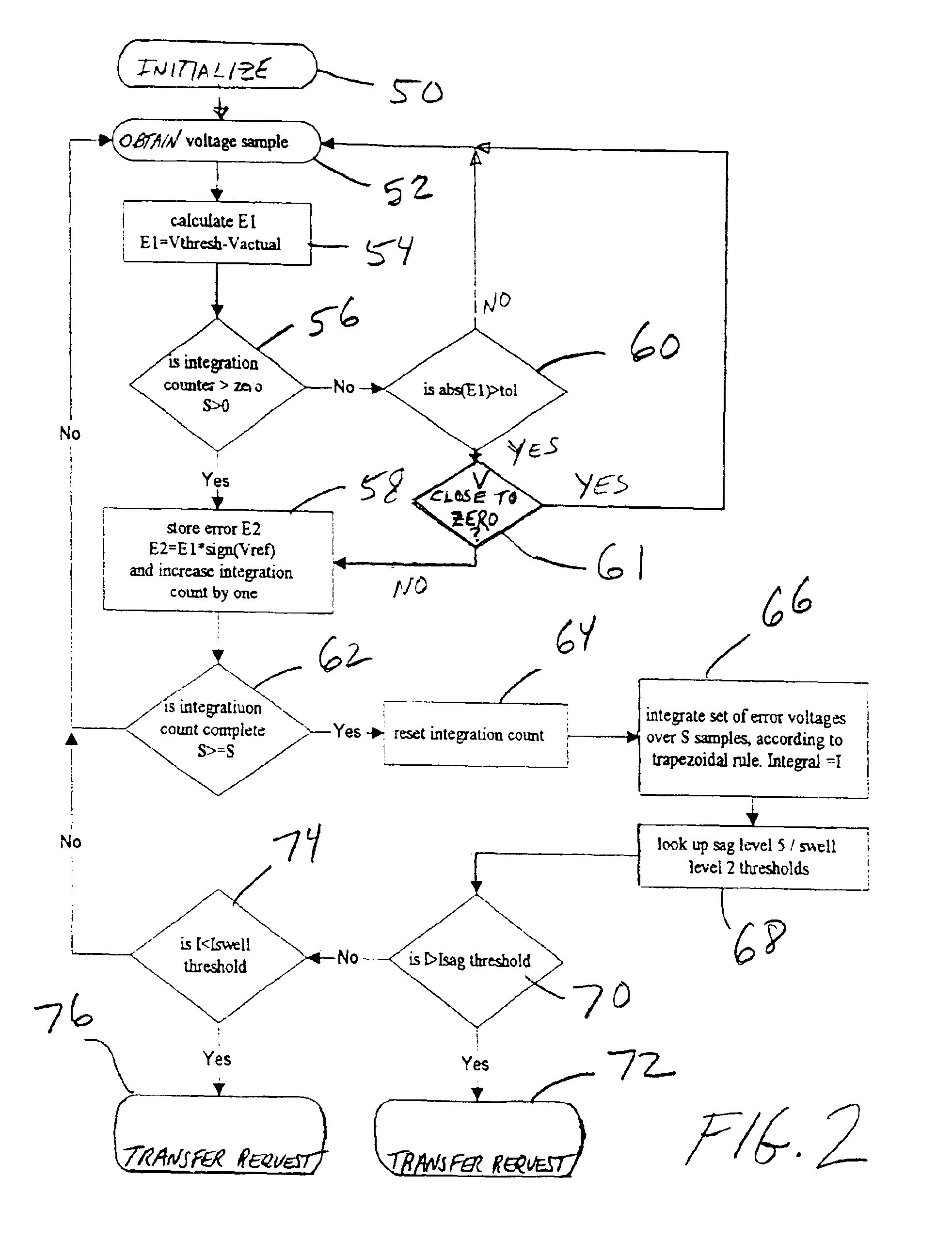Arrangements to detect and respond to disturbances in electrical power systems
a technology for electrical power systems and disturbances, applied in emergency power supply arrangements, emergency protective arrangements for limiting excess voltage/current, instruments, etc., can solve the problems of inability to accurately and quickly detect, unsatisfactory for the purpose of continuing to supply load, and relatively slow and desensitized responses, so as to minimize undesirable transfer delays and avoid undesirable current flow
- Summary
- Abstract
- Description
- Claims
- Application Information
AI Technical Summary
Benefits of technology
Problems solved by technology
Method used
Image
Examples
example 1
C-Phase Fault to Ground
[0045]
Secondary side faultPrimary side faultt (ms)AABBBCCCApollAABBBCCCApoll6DDXUUDDXXXDUDD8DDXDDDDXXXUDDD10DDXDDDDXXXDDDD12DUXDDDDXXXDDDD14DDXUUDDXXXDDXD
example 2
Fault Between Phases B and C Only
[0046]
Secondary side faultPrimary side faultt (ms)AABBBCCCApollAABBBCCCApoll6UXDDDUDDXDDDUD8DXUUDDDDXUUDDD10DXDDDDDDXDDDDD12DXDDDDDDXDDDDD14UXDDDUDDXDDDUD
[0047]A third additional approach is based on the conservation of the total system energy when a fault occurs. When a downstream fault occurs, the voltage sags toward zero and a large current flows. However, the total magnetic flux in the system remains virtually constant during a fault. If the fault is upstream, the point of reference is outside the conserved flux system and the energy will not appear to have been conserved. On the other hand, if the fault is downstream, there should be no observed change in the overall magnetic flux of the system. Further, this method provides implicit directionality since large flux deficits can only be accrued by upstream faults, regardless of whether the fault is phase to phase or phase to ground. The missing flux to detect an upstream fault is obtained by inte...
PUM
 Login to View More
Login to View More Abstract
Description
Claims
Application Information
 Login to View More
Login to View More - R&D
- Intellectual Property
- Life Sciences
- Materials
- Tech Scout
- Unparalleled Data Quality
- Higher Quality Content
- 60% Fewer Hallucinations
Browse by: Latest US Patents, China's latest patents, Technical Efficacy Thesaurus, Application Domain, Technology Topic, Popular Technical Reports.
© 2025 PatSnap. All rights reserved.Legal|Privacy policy|Modern Slavery Act Transparency Statement|Sitemap|About US| Contact US: help@patsnap.com



